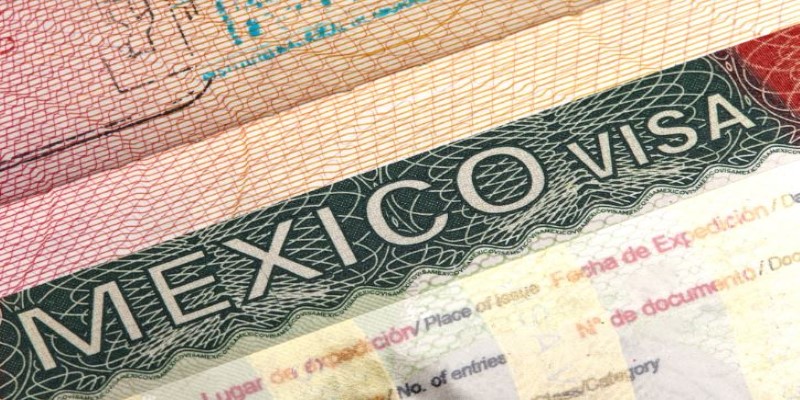Mexico has long been a dream destination for retirees seeking warm weather, affordable living, and a slower, more enjoyable pace of life. But retiring abroad isn’t just about sunshine and savings—it’s about building a life in a new culture, navigating financial decisions, and making sure you have access to healthcare and the right visa.
Whether you’re drawn to Mexico’s beaches, charming colonial towns, or bustling cities, planning is essential. The good news? Mexico welcomes retirees with open arms, offering a rich, fulfilling lifestyle at a fraction of the cost of living in the U.S. or Europe. Let's break it down.
The Cost of Retiring in Mexico
One of the greatest benefits of retiring in Mexico is that it is affordable. The cost of living in Mexico is considerably less than in many Western nations, and retirees can afford to live well for very little. Housing, food, medical care, and even amusement are all at a fraction of their high costs elsewhere.
Housing costs differ based on area. In small towns or off-the-beaten-path locations, renting a one-bedroom apartment can run as low as $500 a month, but beachfront properties or houses in high-demand cities will likely cost much more. Buying property is also an option, and many expats opt to purchase houses in gated communities or foreign-rich areas.
Daily living expenses such as groceries, eating out, and transportation are also significantly reduced compared to the U.S. or Europe. Public transport is readily accessible, but many retirees prefer a private vehicle for convenience. Healthcare is another significant component of cost-saving. Mexico offers both public and private healthcare services, with high-quality services available at private hospitals at a minimal fraction of what it would cost in the U.S. Several retirees avail of private insurance schemes or pay cash for medical treatment.
Securing a Mexico Retirement Visa
Moving to Mexico in the long term requires the right visa. The Mexico retirement visa, officially known as the temporary resident visa, is the most common route for retirees. It allows foreign nationals to live in the country for up to four years, with the option to apply for permanent residency afterward.

To qualify, retirees must prove they have a stable income. The financial requirements typically include demonstrating a minimum monthly income (around $2,500 USD) or showing savings of at least $50,000 USD in a bank account. These amounts can change based on exchange rates and official guidelines, so it’s important to check with the Mexican consulate for updated requirements.
Once a retiree has lived in Mexico for four years with a temporary visa, they can apply for permanent residency, which allows them to stay indefinitely without renewing their visa. Permanent residents can also work in Mexico if they choose to, though many retirees move to Mexico for a relaxed lifestyle rather than employment opportunities.
Choosing the Best Place to Retire in Mexico
Mexico is a large and diverse country, and where you decide to live will depend on lifestyle preferences, budget, and personal needs. Some retirees prefer the cooler mountain towns, while others opt for beach destinations or colonial cities with rich cultural heritage.
Coastal cities like Puerto Vallarta and Playa del Carmen are popular choices due to their vibrant expat communities, modern amenities, and warm climate. These areas provide access to high-quality healthcare, shopping, and entertainment, making them attractive for retirees who want a mix of convenience and relaxation.
For those looking for a more traditional experience, San Miguel de Allende and Guanajuato offer stunning colonial architecture, a slower pace of life, and cooler temperatures. Both towns have well-established expat communities and a welcoming atmosphere for foreign retirees.
Mexico City, while more fast-paced and urban, is also an option for retirees who enjoy a metropolitan lifestyle with world-class restaurants, museums, and cultural events. The cost of living in Mexico’s capital is higher than in smaller towns but still affordable compared to major cities in the U.S.
For those who prefer coastal living without the crowds, smaller towns like Mazatlán and Mérida offer a balance between affordability and access to modern conveniences. Mérida, in particular, is known for its safety, colonial charm, and strong expat community.
Adjusting to Life in Mexico as a Retiree
Moving to Mexico for retirement is more than just a financial decision—it’s a lifestyle shift. While Mexico is known for its friendly people and relaxed atmosphere, adjusting to a new country comes with challenges. Understanding the language, navigating local bureaucracy, and adapting to cultural differences take time.

Spanish is the dominant language in Mexico, and while many locals in touristy areas speak English, learning some basic Spanish can make everyday life easier. Many expats take Spanish classes or use language apps to build their communication skills.
Healthcare, while affordable, also requires planning. Some retirees opt for international health insurance, while others enroll in Mexico’s public healthcare system, known as IMSS. Private hospitals in major cities provide excellent care, but having a healthcare plan in place is essential.
Banking and finances also require adjustment. While some expats continue using their foreign bank accounts, opening a local bank account can make transactions easier. It’s also important to be aware of currency exchange rates and how they affect retirement income.
Mexico’s laid-back lifestyle means that processes like obtaining permits or setting up utilities may take longer than expected. Having patience and understanding that things may not move at the same speed as in the U.S. or Canada can make the transition smoother.
Conclusion
Retiring in Mexico offers more than just a lower cost of living—it’s a chance to embrace a vibrant culture, enjoy beautiful landscapes, and live at a relaxed pace. With careful planning, securing a visa, choosing the right location, and understanding healthcare, the transition can be smooth and rewarding. Challenges like language barriers and bureaucracy exist, but the benefits far outweigh them. For those seeking adventure, affordability, and warmth in retirement, Mexico stands out as an inviting and practical choice.












